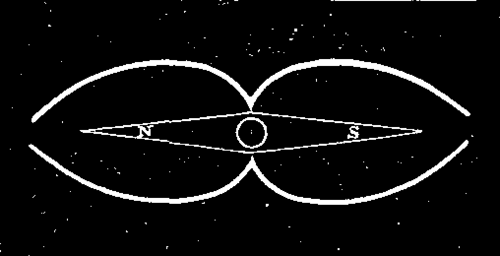Gaiffe's New Medical Galvanometer
Description
This section is from "Scientific American Supplement". Also available from Amazon: Scientific American Reference Book.
Gaiffe's New Medical Galvanometer
In this apparatus, which contains but one needle, and has no directing magnet, proportionability between the intensities and deflections is obtained by means of a special form given the frame upon which the wire is wound.
We give herewith a figure of the curve that Mr. Gaiffe has fixed upon after numerous experiments. Upon examination it will be seen that the needle approaches the current in measure as the directing action of the earth increases; and experiment proves that the two actions counterbalance each other, and render the deflections very sensibly proportional to the intensities up to an angle of from 65 to 75 degrees.

Another important fact has likewise been ascertained, and that is that, under such circumstances, the magnetic intensity of the needle may change without the indications ceasing to have the same exactness up to 65 degrees. As well known, Mr. Desains has demonstrated that this occurs likewise in sinus or tangent galvanometers; but these have helices that are very large in proportion to the needle. In medical galvanometers the proportions are no longer the same, and the needle is always very near the directing helix. If this latter is square, or even elliptical, it is found that, beyond an angle of 15 degrees, there are differences of 4 or 5 degrees in the indications given with the same intensity of current by the same needle, according to the latter's intensity of magnetism. This inconvenience is quite grave, for it often happens that a needle changes magnetic intensity, either under the influence of too strong currents sent into the apparatus, or of other magnets in its vicinity, or as a consequence of the bad quality of the steel, etc.
It was therefore urgently required that this should be remedied, and from this point of view the new mode of winding the wire is an important improvement introduced into medical galvanometers.--La Lumiere Electrique.
Continue to:


